Change Management at the Project Level
Last updated: October 29, 2023 Read in fullscreen view
- 01 Aug 2024
 The Standish Group report 83.9% of IT projects partially or completely fail 150/1772
The Standish Group report 83.9% of IT projects partially or completely fail 150/1772 - 13 Apr 2024
 Lessons on Teamwork and Leadership from Chinese story book "Journey to the West" 41/949
Lessons on Teamwork and Leadership from Chinese story book "Journey to the West" 41/949 - 10 Apr 2022
 Agile self-organizing teams: What are they? How do they work? 28/435
Agile self-organizing teams: What are they? How do they work? 28/435 - 02 Nov 2021
 What is Terms of Reference (ToR)? 23/1466
What is Terms of Reference (ToR)? 23/1466 - 18 Oct 2020
 How to use the "Knowns" and "Unknowns" technique to manage assumptions 21/989
How to use the "Knowns" and "Unknowns" technique to manage assumptions 21/989 - 21 May 2022
 "Fail Fast, Fail Often, Fail Forward" is the answer to Agile practices of software success 18/941
"Fail Fast, Fail Often, Fail Forward" is the answer to Agile practices of software success 18/941 - 01 Oct 2020
 Fail fast, learn faster with Agile methodology 13/973
Fail fast, learn faster with Agile methodology 13/973 - 03 Apr 2022
 Microsoft Solutions Framework (MSF) 12/1157
Microsoft Solutions Framework (MSF) 12/1157 - 12 Oct 2022
 14 Common Reasons Software Projects Fail (And How To Avoid Them) 10/504
14 Common Reasons Software Projects Fail (And How To Avoid Them) 10/504 - 18 Dec 2023
 The Cone of Uncertainty in Scrum & Requirement Definition 8/643
The Cone of Uncertainty in Scrum & Requirement Definition 8/643 - 10 Nov 2022
 Poor Code Indicators and How to Improve Your Code? 7/213
Poor Code Indicators and How to Improve Your Code? 7/213 - 19 Oct 2021
 Is gold plating good or bad in project management? 7/754
Is gold plating good or bad in project management? 7/754 - 18 Oct 2021
 Key Elements to Ramping Up a Large Team 7/1108
Key Elements to Ramping Up a Large Team 7/1108 - 13 Oct 2021
 Outsourcing Software Development: MVP, Proof of Concept (POC) and Prototyping. Which is better? 6/424
Outsourcing Software Development: MVP, Proof of Concept (POC) and Prototyping. Which is better? 6/424 - 06 Feb 2021
 Why fail fast and learn fast? 6/375
Why fail fast and learn fast? 6/375 - 28 Jul 2022
 POC, Prototypes, Pilots and MVP: What Are the Differences? 6/606
POC, Prototypes, Pilots and MVP: What Are the Differences? 6/606 - 01 Mar 2023
 Bug Prioritization - What are the 5 levels of priority? 6/207
Bug Prioritization - What are the 5 levels of priority? 6/207 - 20 Nov 2022
 Agile working method in software and football 5/323
Agile working method in software and football 5/323 - 31 Aug 2022
 What are the best practices for software contract negotiations? 5/215
What are the best practices for software contract negotiations? 5/215 - 05 Mar 2021
 How do you minimize risks when you outsource software development? 5/317
How do you minimize risks when you outsource software development? 5/317 - 07 Oct 2025
 Case Study: Using the “Messaging House” Framework to Build a Digital Transformation Roadmap 5/45
Case Study: Using the “Messaging House” Framework to Build a Digital Transformation Roadmap 5/45 - 14 Oct 2021
 Advantages and Disadvantages of Time and Material Contract (T&M) 4/789
Advantages and Disadvantages of Time and Material Contract (T&M) 4/789 - 12 Dec 2021
 Zero Sum Games Agile vs. Waterfall Project Management Methods 4/374
Zero Sum Games Agile vs. Waterfall Project Management Methods 4/374 - 20 Jul 2022
 Software Myths and Realities 4/797
Software Myths and Realities 4/797 - 04 Oct 2022
 Which ERP implementation strategy is right for your business? 4/278
Which ERP implementation strategy is right for your business? 4/278 - 01 Dec 2023
 Laws of Project Management 3/249
Laws of Project Management 3/249 - 18 Aug 2022
 What are the consequences of poor requirements with software development projects? 3/242
What are the consequences of poor requirements with software development projects? 3/242 - 07 Jul 2022
 Managing Project Execution Terms 3/379
Managing Project Execution Terms 3/379 - 31 Oct 2021
 Tips to Fail Fast With Outsourcing 3/375
Tips to Fail Fast With Outsourcing 3/375 - 18 Jul 2021
 How To Ramp Up An Offshore Software Development Team Quickly 3/516
How To Ramp Up An Offshore Software Development Team Quickly 3/516 - 08 Oct 2022
 KPI - The New Leadership 3/557
KPI - The New Leadership 3/557 - 10 Apr 2024
 The Parking Lot Method: Unlocking a Simple Secret to Supercharge Your Productivity 3/403
The Parking Lot Method: Unlocking a Simple Secret to Supercharge Your Productivity 3/403 - 05 Sep 2023
 The Cold Start Problem: How to Start and Scale Network Effects 3/167
The Cold Start Problem: How to Start and Scale Network Effects 3/167 - 10 Dec 2023
 Pain points of User Acceptance Testing (UAT) 2/416
Pain points of User Acceptance Testing (UAT) 2/416 - 05 Jun 2023
 Fractional, Part-Time (virtual) or Interim CTO: Who Will Cover Your Business Needs? 2/109
Fractional, Part-Time (virtual) or Interim CTO: Who Will Cover Your Business Needs? 2/109 - 03 Jul 2022
 Manifesto for Agile Software Development 2/240
Manifesto for Agile Software Development 2/240 - 26 Sep 2024
 Successful Project Management Techniques You Need to Look Out For 2/368
Successful Project Management Techniques You Need to Look Out For 2/368 - 01 May 2024
 Warren Buffett’s Golden Rule for Digital Transformation: Avoiding Tech Overload 2/188
Warren Buffett’s Golden Rule for Digital Transformation: Avoiding Tech Overload 2/188 - 12 Oct 2020
 The Agile Manifesto - Principle #8 2/447
The Agile Manifesto - Principle #8 2/447 - 07 Oct 2020
 How To Manage Expectations at Work (and Why It's Important) 2/266
How To Manage Expectations at Work (and Why It's Important) 2/266 - 04 Oct 2021
 Product Validation: The Key to Developing the Best Product Possible 2/295
Product Validation: The Key to Developing the Best Product Possible 2/295 - 23 Sep 2021
 INFOGRAPHIC: Top 9 Software Outsourcing Mistakes 2/411
INFOGRAPHIC: Top 9 Software Outsourcing Mistakes 2/411 - 17 Feb 2022
 Prioritizing Software Requirements with Kano Analysis 2/280
Prioritizing Software Requirements with Kano Analysis 2/280 - 13 Dec 2020
 Move fast, fail fast, fail-safe 2/292
Move fast, fail fast, fail-safe 2/292 - 28 Dec 2021
 8 types of pricing models in software development outsourcing 2/417
8 types of pricing models in software development outsourcing 2/417 - 28 Oct 2022
 Build Operate Transfer (B.O.T) Model in Software Outsourcing 2/361
Build Operate Transfer (B.O.T) Model in Software Outsourcing 2/361 - 14 Jun 2022
 Example and Excel template of a RACI chart in Software Development 2/707
Example and Excel template of a RACI chart in Software Development 2/707 - 12 Aug 2022
 What is End-to-end project management? 2/382
What is End-to-end project management? 2/382 - 02 May 2022
 What Is RAID in Project Management? (With Pros and Cons) 2/734
What Is RAID in Project Management? (With Pros and Cons) 2/734 - 15 May 2022
 20 Common Mistakes Made by New or Inexperienced Project Managers 2/247
20 Common Mistakes Made by New or Inexperienced Project Managers 2/247 - 24 Nov 2023
 The project management paradox: Achieving MORE by doing LESS 2/193
The project management paradox: Achieving MORE by doing LESS 2/193 - 07 Dec 2023
 12 project management myths to avoid 1/167
12 project management myths to avoid 1/167 - 26 Dec 2023
 Improving Meeting Effectiveness Through the Six Thinking Hats 1/205
Improving Meeting Effectiveness Through the Six Thinking Hats 1/205 - 05 Jan 2024
 Easy ASANA tips & tricks for you and your team 1/180
Easy ASANA tips & tricks for you and your team 1/180 - 11 Jan 2024
 What are the Benefits and Limitations of Augmented Intelligence? 1/434
What are the Benefits and Limitations of Augmented Intelligence? 1/434 - 22 May 2022
 What are common mistakes that new or inexperienced managers make? 1/243
What are common mistakes that new or inexperienced managers make? 1/243 - 27 Jan 2020
 Should a project manager push developers to work more hours due to mistakes of manager schedule setting? 1/412
Should a project manager push developers to work more hours due to mistakes of manager schedule setting? 1/412 - 19 Apr 2021
 7 Most Common Time-Wasters For Software Development 1/525
7 Most Common Time-Wasters For Software Development 1/525 - 01 Mar 2024
 10 Project Management Myths 1/120
10 Project Management Myths 1/120 - 12 Aug 2024
 Understanding Google Analytics in Mumbai: A Beginner's Guide 1/84
Understanding Google Analytics in Mumbai: A Beginner's Guide 1/84 - 06 Mar 2024
 [SemRush] What Are LSI Keywords & Why They Don‘t Matter /131
[SemRush] What Are LSI Keywords & Why They Don‘t Matter /131 - 01 Aug 2022
 Is planning "set it and forget it" or "set it and check it"? /264
Is planning "set it and forget it" or "set it and check it"? /264 - 02 Jun 2024
 Reviving Ancient Wisdom: The Spiritual Side of Project Management /204
Reviving Ancient Wisdom: The Spiritual Side of Project Management /204 - 17 Oct 2021
 Does Fast Tracking increase project cost? /348
Does Fast Tracking increase project cost? /348 - 19 Oct 2021
 Software development life cycles /628
Software development life cycles /628 - 27 Oct 2020
 8 principles of Agile Testing /1196
8 principles of Agile Testing /1196 - 21 Oct 2022
 Virtual meeting - How does TIGO save cost, reduce complexity and improve quality by remote communication? /166
Virtual meeting - How does TIGO save cost, reduce complexity and improve quality by remote communication? /166 - 13 Jan 2020
 Quiz: Test your understanding project cost management /568
Quiz: Test your understanding project cost management /568 - 06 Nov 2019
 How to Access Software Project Size? /236
How to Access Software Project Size? /236 - 09 Oct 2022
 Key Advantages and Disadvantages of Agile Methodology /666
Key Advantages and Disadvantages of Agile Methodology /666 - 10 Oct 2022
 Should Your Business Go Agile? (Infographic) /108
Should Your Business Go Agile? (Infographic) /108 - 02 Nov 2022
 Frequently Asked Questions about Agile and Scrum /372
Frequently Asked Questions about Agile and Scrum /372 - 16 Jul 2022
 What are disadvantages of Agile Methodology? How to mitigate the disadvantages ? /353
What are disadvantages of Agile Methodology? How to mitigate the disadvantages ? /353 - 02 Dec 2021
 3 Ways to Avoid Scope Creep in IT Consulting /192
3 Ways to Avoid Scope Creep in IT Consulting /192 - 01 Jun 2022
 How Your Agile Development Team is Just Like a Football Team? /206
How Your Agile Development Team is Just Like a Football Team? /206 - 28 Nov 2023
 Scrum Team Failure — Scrum Anti-Patterns Taxonomy (3) /228
Scrum Team Failure — Scrum Anti-Patterns Taxonomy (3) /228 - 30 Nov 2023
 Project Managers, Focus on Outcomes — Not Deliverables /143
Project Managers, Focus on Outcomes — Not Deliverables /143 - 01 Mar 2022
 Why Does Scrum Fail in Large Companies? /243
Why Does Scrum Fail in Large Companies? /243 - 02 Nov 2022
 Difference between Change Management and Project Management /216
Difference between Change Management and Project Management /216 - 09 May 2022
 Build one to throw away vs Second-system effect: What are differences? /297
Build one to throw away vs Second-system effect: What are differences? /297 - 10 May 2022
 Levels of Teamwork /180
Levels of Teamwork /180 - 14 Mar 2024
 Why should you opt for software localization from a professional agency? /117
Why should you opt for software localization from a professional agency? /117 - 12 Mar 2024
 How do you create FOMO in software prospects? /127
How do you create FOMO in software prospects? /127 - 23 Jun 2024
 Best Practices for Managing Project Escalations /183
Best Practices for Managing Project Escalations /183 - 21 Jun 2024
 Dead Horses and the Escalation of Commitment /123
Dead Horses and the Escalation of Commitment /123 - 01 Dec 2022
 Difference between Set-based development and Point-based development /298
Difference between Set-based development and Point-based development /298 - 03 Jan 2023
 Organizing your agile teams? Think about M.A.T (Mastery, Autonomy, Purpose) /333
Organizing your agile teams? Think about M.A.T (Mastery, Autonomy, Purpose) /333
Change management's purpose is clear: to ensure that changes deliver intended results and outcomes by addressing one of the most critical elements of successful change, the people side of change.
Employee adoption and usage are the bridge between a great solution and ultimate results. In practice, change management plays out on several different levels within the organization.
- Enterprise level – an organizational capability and competency
- Project level – a benefit-realization and value-creation measure applied on particular initiatives
- Individual level – an approach for enabling one person to change successfully
The Goal of Change Management at the Project Level
Change management at the project level is about ensuring that a project achieves its intended results and outcomes by supporting the individual transitions required by that project. When you install a new technology, employees must adopt and use it to deliver value. When you implement a new process, employees must adopt and use it to deliver value. Project-level change management provides the specific strategies, plans, actions and steps that focus on impacted employees and work in alignment with a project deployment.
Change management, at the project level, can be applied on any project or initiative that impacts how employees do their jobs. Some changes impact hundreds of employees while others impact thousands. Changes can be driven by external factors, internal factors or some combination of both. Changes can impact processes, systems, tools, organization structures or job roles (or any combination thereof). But if a change requires employees to do their jobs differently (by exhibiting new behaviors, following new processes, using new tools), then there is a role for project-level change management.
From the project perspective, change management is the set of activities (the processes and the tools) applied to a particular project or initiative to drive adoption and usage. But, is that how you would tell a project team what change management is?
What is Change Management at the Project Level?
As change management practitioners, it is important that we understand what change management is and, more importantly, how we present what change management is to the project teams we work with.
Change management is the application of a structured process and set of tools to manage the people side of change to achieve a desired outcome.
–Prosci's formal definition of change management
We could begin with a technical definition:
While this is accurate, it may not be the most effective way to describe what change management is if our goal is to build commitment and support for change management. Think about the definition above compared to these:
Change management is a…
- Benefit-realization tool
- Way to ensure achievement of results and outcomes
- Approach for driving greater ROI
- Vehicle for optimizing adoption and usage
- Tool for avoiding excessive project cost
- Approach for mitigating project risk
While these statements don't tell you exactly what change management is, each conveys what change management is in the context of what our audiences (project managers and senior leaders) care about and what concerns them: benefit realization, results, outcomes, ROI, adoption, usage, cost and risk.
So, to answer to the question, "What is change management at the project level?" we need to know who we are speaking to. To the project managers and senior leaders we are working to engage, change management is a solution to a problem they are experiencing (such as projects not delivering intended results and outcomes). When defining change management to a change management practitioner, change management is the structured approach for creating a strategy to drive employee adoption and usage, so projects achieve intended results and outcomes.
Applying Change Management at the Project Level
While the best definition of change management might vary depending on the audience, benchmarking research indicates some fairly straightforward steps for applying change management at the project level. Here are four tips for getting started on applying change management:
1. Apply a structured methodology
Over the last decade, the discipline of change management has evolved and matured. The "soft and fuzzy" side of change is now addressed with rigor, structure, process and tools. Using a structured methodology helps you be direct and targeted and helps you avoid missing key considerations.
2. Customize and scale your approach
In change management, one size does not fit all. The change management strategy and plans for an incremental change impacting 50 employees will look very different than the plans for a radical transformation impacting 5,000 employees. You can follow a similar change management process, but the resulting outputs must be scaled and customized based on the change itself and those being impacted.
3. Dedicate (or find) a resource
If no one is assigned to change management, chances are it won't get done. Prosci's research shows a direct correlation between having a dedicated resource and change management effectiveness. A dedicated resource provides focus and a single point of contact. The resource can be someone on the team or someone supporting the team, but there needs to be someone focusing on change management.
4. Work in collaboration with the project team
Change management cannot be applied at the project level in a vacuum without engagement from the project team. Clearly articulate the relationship between the project team and change management resources. Define the roles and responsibilities. Work deliberately to create a partnership with a singular goal in mind—delivering the intended results and outcomes of the project.
Apply Change Management to Organizational Projects and Initiatives
At the project level, change management is a benefit-realization and value-creation measure applied on particular initiatives. It is a structured approach to create customized and scaled strategies and plans to drive employee adoption and usage. It is a way to ensure that a project achieves intended benefits and outcomes, realizes ROI, mitigates costs and risks ,and creates value. It is a way to ensure that projects and initiatives are more successful.






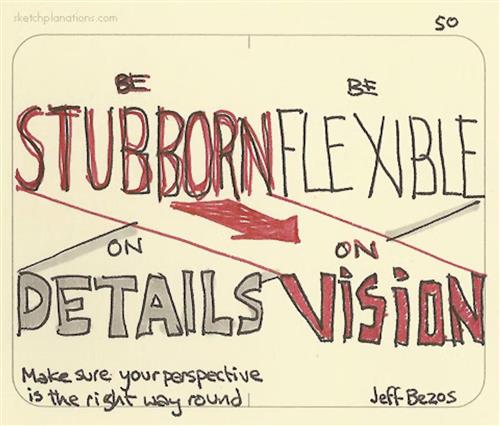


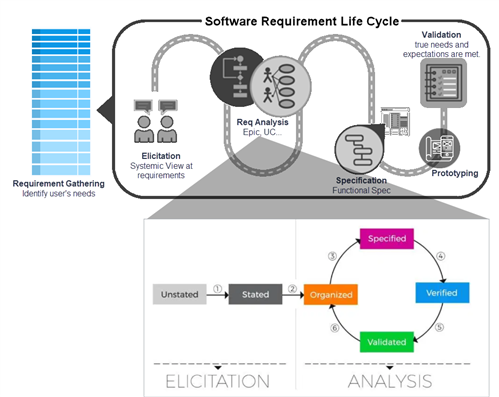


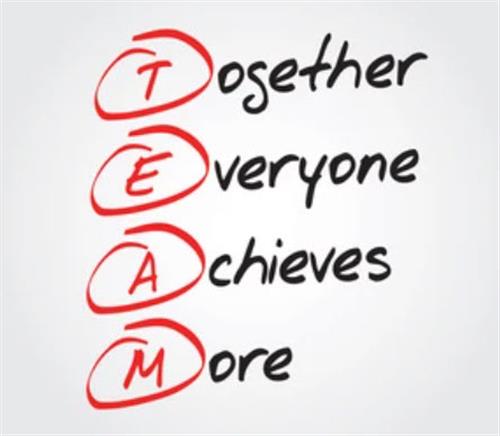

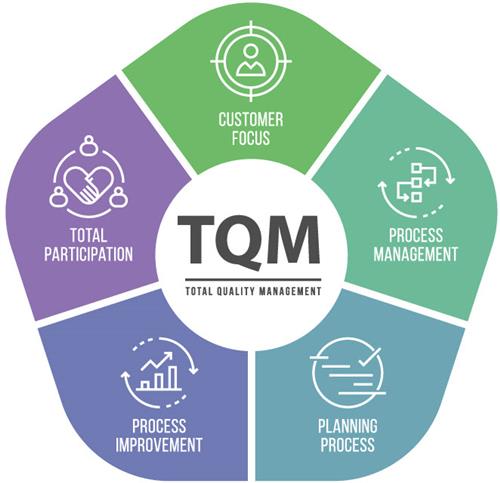



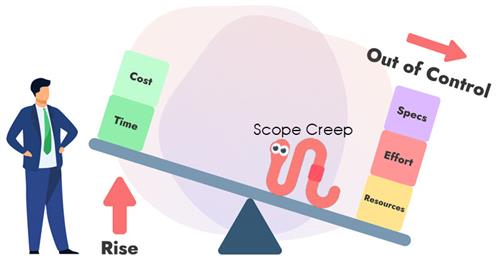
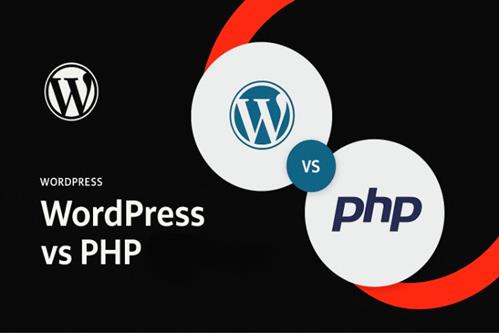















 Link copied!
Link copied!